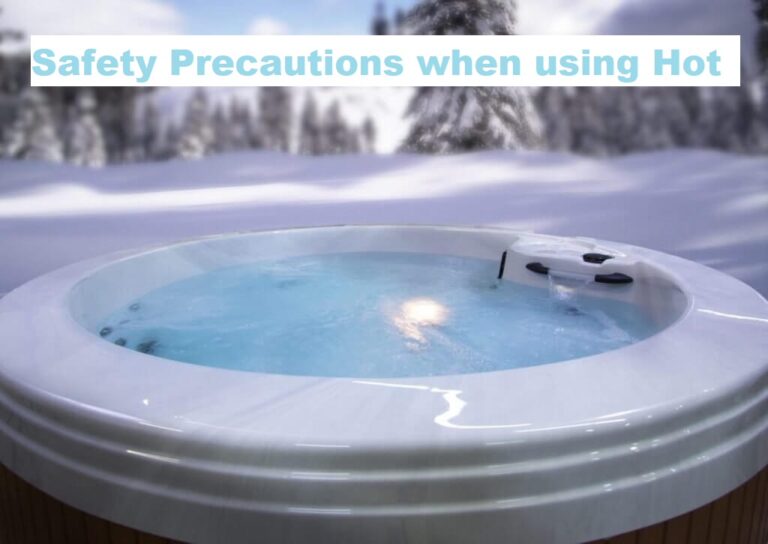10 Pro Tips for a Hot Tub Without Itchiness
If you’ve ever stepped out of a hot tub only to be greeted by itchy skin or a bothersome rash, you’re not alone.
Many people experience discomfort after soaking in those warm, inviting waters, and it’s completely understandable to feel frustrated and confused about what’s happening to your skin.
Whether you’re dealing with hot tub folliculitis, an irritating bromine rash, or just looking for ways to prevent itchy skin after a relaxing soak, it’s important to know that effective solutions and insights are available.
In this guide, we’ll explore the causes of these common issues, share practical treatments, and offer helpful tips to ensure your hot tub experience remains enjoyable and itch-free.
Understanding Itchy Skin After Hot Tub Use
Hot tub enjoyment can sometimes lead to an unexpected downside: itchy skin. This discomfort can arise for various reasons, including chemical reactions, bacteria, or even environmental factors. Below, we delve into why your skin might itch after a soak and offer actionable insights to help you maintain a serene bathing experience.
Key Points
- Itchy skin is a common complaint among hot tub users.
- Understanding the causes can help you prevent future occurrences.
- Simple changes can make your hot tub experience enjoyable without the discomfort.
Symptoms of Hot Tub Rash
Hot tub rash, often known as folliculitis, can manifest in several ways. Users may notice:
- Red bumps or pustules on the skin
- Localized itching or irritation, even if not always itchy
- In some cases, symptoms may resemble acne or hives
Prevention Steps and Strategies
To Reduce the Risk of Hot Tub Rash
Implementing preventative measures can significantly lower the risk of developing hot tub rash. Here are some strategies to consider:
- Maintain Water Quality
- Regularly test water pH and sanitizer levels.
- Consider using non-chlorine options to reduce irritation.
- Shock the water weekly to eliminate bacteria.
- Practice Good Hygiene
- Shower before entering the hot tub to remove sweat and oils.
- Avoid using the hot tub if you have open wounds or skin infections.
- Monitor Soaking Time
- Limit time in the hot tub to 15-30 minutes.
- Take breaks to allow your skin to cool down.
How to Avoid Hot Tub Skin Irritation – 3 Health Tips
Understanding the main contributors to skin irritation can empower users to take proactive measures.
1. Hot Tub Rash Caused by Germs
Bacteria thrive in warm, moist environments, making hot tubs a breeding ground for infections.
- Folliculitis is often caused by exposure to unclean water.
- Symptoms include itchy red bumps that may resemble acne.
2. Hot Tub Rash and Itching Caused by Chemicals
Chlorine and bromine are effective sanitizers, but they can also lead to skin irritation.
- Skin dryness and itching may result from over-sanitization or individual sensitivities.
- Consider alternatives like ozone or mineral systems for a gentler experience.
3. Hot Tub Rash Caused by Unclean Soakers
Sharing your hot tub can increase the likelihood of developing a rash.
- Use bacterial wipes on the edges of the tub before and after use.
- Encourage guests to shower before entering the tub.

What Causes Itchiness in Hot Tubs?
When you soak in a hot tub, tiny creatures called bacteria and fungi can get into the water. These microorganisms love warm and moist environments like hot tub water. When they come into contact with your skin, they can cause itchiness and irritation.
10 Tips for a Hot Tub Without Itchiness
1. Keep Your Hot Tub Clean
To prevent itchiness, it’s important to keep your hot tub clean. Regularly clean the filters, wipe the surfaces, and remove debris or dirt. This will help eliminate the bacteria and fungi that can cause itchiness.
2. Use the Right Amount of Chemicals
Chemicals like chlorine or bromine are used in hot tubs to kill bacteria and fungi. However, using less or less of these chemicals can lead to problems. Follow the instructions provided with your hot tub, or consult a professional to ensure you’re using the correct amount of chemicals.
3. Test the Water Regularly
Testing the water regularly is like checking if the hot tub is healthy. You can use test strips or kits to measure the chemical levels in the water. This will help you ensure the water is properly balanced and safe.
4. Shower Before Using the Hot Tub
Before jumping into the hot tub, take a quick shower to rinse off any dirt, sweat, or lotions from your body. This will help reduce the bacteria and fungi that can enter the hot tub water and cause itchiness.
5. Avoid Staying in the Hot Tub for Too Long
Paying too much time in the hot tub can make your skin prune-like and increase the risk of itchiness. So, limit your soaking time to about 15-20 minutes. It’s better to be safe than itchy!
6. Dry Off Properly After Using the Hot Tub
After having a great time in the hot tub, dry yourself thoroughly with a clean towel. Moisture can trap bacteria and fungi on your skin, leading to itchiness. So, pat yourself dry and put on some comfy clothes, or see the hot tub clothing.
7. Stay Hydrated
Hot tubs can make you sweat, which is your body’s way of losing water. Staying hydrated by drinking water before and after using the hot tub is important. This will help keep your skin healthy and reduce the chances of itchiness.
8. Wear Appropriate Swimwear
Wearing the right kind of swimwear can also help prevent itchiness. Choose swimwear made of breathable materials like cotton that allow air to circulate your body. This can help keep your skin dry and reduce the risk of irritation.
9. Use a Gentle Moisturizer
After using the hot tub, you can apply a gentle moisturizer to your skin. Keeping your skin hydrated will prevent dryness and itchiness. Just make sure to choose a moisturizer suitable for your skin type.
10. Don’t Scratch!
If you do feel itchy, remember not to scratch! Scratching can further irritate your skin and make the itchiness worse. Instead, try patting the itchy area gently or ask a grown-up to help you apply a soothing lotion.
Why Does My Skin Feel Dry After Getting Out of the Hot Tub?
The sensation of dry skin after soaking can be attributed to several factors:
- Chemical exposure: Chlorine or bromine may strip natural oils from the skin.
- High temperatures: Extended exposure can lead to dehydration of the skin.
Why Do I Itch When I Get Out of the Hot Tub? What Does Chlorine Do to My Skin?
- Itching may be caused by chemical irritants or bacterial growth.
- Chlorine works to disinfect but can disrupt the skin barrier, leading to irritation.
How Can I Help Reduce Skin Rash or Irritation After Being in My Hot Tub?
- Implementing the prevention strategies outlined above can be effective.
- Post-soak routines, such as moisturizing with a gentle lotion, can also help restore skin hydration.
A Better Way to Clean Your Hot Tub
- Consider environmentally friendly cleaning products to minimize chemical exposure.
- Regular maintenance can prevent the buildup of harmful bacteria and irritation-causing substances.
No More Dry, Itchy Skin with iONRx
- This innovative solution offers a gentle way to sanitize hot tubs without harsh chemicals, reducing the risk of irritation and enhancing the overall experience.
Consult a Professional
If you’ve tried all these tips and still experience itchiness after using the hot tub, consulting a professional is a good idea. They can help identify the cause of the problem and provide appropriate solutions.
For additional information visit Hot Tub Patio or if you’re interested in reading reviews and guides for hot tubs, visit Hot Tub Guides and Reviews.
Common Queries:
Q. Can I use a bubble bath or bath oils in the hot tub? A: It’s best to avoid using bubble baths or bath oils in the hot tub as they can create foam and interfere with the water chemistry, leading to itchiness and other problems.
Q. How often should I clean the filters in my hot tub? A: Cleaning the filters once every one to two weeks is a good practice. However, if you notice any dirt or debris accumulating on the filters, it’s a sign that they need cleaning.
Q. Is it okay to use the hot tub if I have a skin condition? A: If you have a skin condition, it’s always a good idea to consult your doctor before using a hot tub. They can advise whether it’s safe for you or suggest any precautions you need to take.
Q. Can I use the hot tub if I have a cut or open wound? A: It’s best to avoid using the hot tub if you have a cut or open wound. When you have a wound, bacteria, and fungi can enter your body and cause infections.
Q. How often should I change the water in my hot tub? A: Changing the water in your hot tub every three to four months is recommended. Regular water changes help maintain water quality and prevent the buildup of bacteria and fungi.











